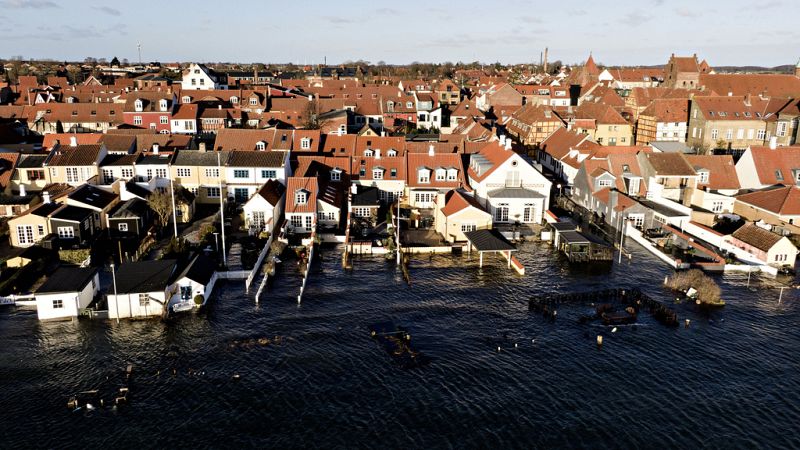A giant tunnel and vast sponge parks: How Denmark is trying to avoid devastating floods

20 metres below the city’s surface, plans are underway to protect the Danish capital from the flooding that has devastated other parts of Europe.
Kalvebod Brygge Tunnel stretches 1.3 km beneath the city before draining at Kalvebod Brygge waterfront area. It can store 10,000 cubic metres of water during heavy rain, known as a cloudburst.
“If we have an extreme situation where we have a lot of water falling in a short amount of time and the sewage systems, they just can't keep up, we can instead divert the water here into this tunnel,” explains Ditte Reinholdt Jensen, a climate change adaptation expert at Copenhagen’s water utility firm, HOFOR.
“We have 10,000 cubic metres of volume, but if that's still not enough, then we have a pump that can empty out this entire tunnel in just ten minutes."
Copenhagen prepares for ‘once-in-a-century’ flood event
Cloudbursts are intense weather events when more than 10 cm of rainfall occurs within a 10 square-kilometre region within just an hour.
They have the potential to wreak havoc, causing intense flooding. They occur most commonly in India and Pakistan.
In July this year, flash floods and cloudbursts caused devastating damage in several areas of Uttarakhand.
Experts say the frequency of such events has been increasing globally in recent years, partly due to climate change.
Kalvebod Brygge Tunnel is designed to store a sudden amount of rain so strong that it will statistically occur just once every 100 years - a ‘once-in-a-century’ flood event.
“We are looking at a changing climate and that is going to affect the amount of rain that we will need to manage,” says Reinholdt Jensen.
“We will experience more rain on an annual basis, but we will also have more of these very high intensity events, which we normally call cloudbursts, where you feel like the whole sky is just emptying out at once.”
‘Building a tunnel is a huge cost, but doing nothing also has a huge cost’
Construction on the Kalvebod Brygge Tunnel began in spring 2020, and it is expected to be completed by 2027.
It’s an expensive project, but those behind it argue the alternative could be more costly.
In 2011, a ‘once-in-a-thousand-year’ flood poured down more than 120mm of rain on Copenhagen in just two hours, causing around €1 billion in damage.
“Building a tunnel is, of course, a huge cost, but doing nothing is also something that has a huge cost,” says Reinholdt Jensen.
“There is definitely a lot of damage to be prevented from this sort of action."
A recent study published in Nature estimated global damages from climate change to be around $38 trillion (€36 trillion), which is roughly six times larger than the mitigation costs needed to limit global warming to two degrees.
Copenhagen creates giant sponge parks to hold rainwater
But it’s not just complicated infrastructure - Copenhagen has around 300 other cloudburst projects in progress.
That includes managing rainwater locally, rather than guiding it to sewers.
Sankt Kjelds Plads - part of Copenhagen’s Climate-Resilient Neighbourhood - is a nature-based cloudburst protection project, acting like a giant, green “sponge” to halt and contain rainwater.
More than three-quarters of this grey, concrete area has been transformed into green space.
"If you would have seen this area six years ago, you would have seen a big roundabout, broad roads, lot of asphalt. So, we decided here to transform this area to handle rainwater,” explains Jan Rasmussen, project director of Copenhagen’s climate adaptation planning.
Rasmussen says Copenhagen faces up to 30 per cent more rain over the next century and their work could protect basements, infrastructure and citizens.
“Those downpours we have the last 12 years or more fit quite well with the prediction from the Intergovernmental Panel on Climate Change (IPCC), 30 per cent more everyday rain, more frequent cloudbursts,” he says.
“If we can succeed with this, we can protect the city up to what we call a hundred-year rain event, that means a lot to the city.”
Saturday, november 23, 2024

